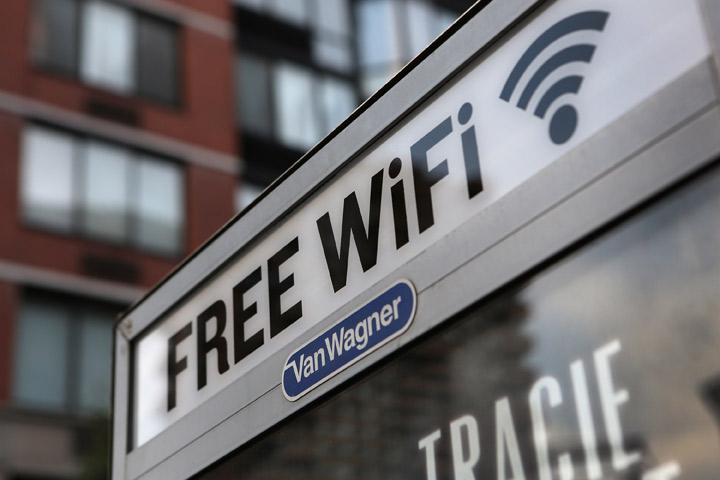As the Internet has become a crucial part of everyday life, so too has the need to access it virtually anytime, anywhere.

In fact, according to a recent survey completed by Symantec, over 66 per cent of Canadians consider access to public Wi-Fi when making travel or entertainment arrangements.
Based on these numbers – and the risk of using public networks – it’s important to know how to protect yourself. Here are six tips you can use to protect your personal information on public Wi-Fi networks, before and after you connect.
Before you log on
Keep on top of security updates
As the world learned from the WannaCry ransomware attack, which started by delaying a Windows update and went on to affect hundreds of thousands of computers, staying on top of software updates is the most prudent way to protect yourself against hackers and cybercriminals.
According to Forbes, “there’s no magic bullet to data security,” and diligently running updates for your operating system and web browser is one of the primary ways to protect yourself.
Turn off file-sharing and close shared folders on your laptop
While shared folders can be a great way to work collaboratively with colleagues, and share photos amongst family, make sure to close them and turn off file-sharing before logging onto a public network with your laptop or mobile device.
- Life in the forest: How Stanley Park’s longest resident survived a changing landscape
- Bird flu risk to humans an ‘enormous concern,’ WHO says. Here’s what to know
- Roll Up To Win? Tim Hortons says $55K boat win email was ‘human error’
- Election interference worse than government admits, rights coalition says
A blog post from the online security company Zone Alert states that once your computer connects to a public Wi-Fi service, those folders can be viewed by anyone else on the network. A public Wi-Fi field guide from Gizmodo concurs with this suggestion.
To avoid any information falling into the wrong hands, users should adjust their privacy settings to ensure they are different for public and private networks.
Enable 2-factor authentication on any accounts that contain personal information
Two-factor authentication is a good option for anyone desiring a second layer of security on their physical electronic devices, including their mobile device and laptop.
Enabling multiple layers of authentication on email, social networking and bank accounts can also act as an additional line of defence against cyber criminals lurking on public networks, reports The Next Web.
Use a VPN (virtual private network)
One of the most effective ways to protect your information while using public Wi-Fi is to use a Virtual Private Network (VPN). Simply download a VPN app on your phone or mobile device and log into your VPN before connecting to the Internet.
A VPN reroutes your traffic through a private, encrypted network. Kevin Haley, director of product management for security response at Symantec, explains exactly why a VPN is so useful.
“What you’re doing is, within a public network, creating a private network that’s just for you, if you will,” Haley says.
“The other way it’s referred to is a tunnel. It’s really just making sure that your communication is surrounded by protection as you talk between where you are and wherever, the website that you’re going to.”
According to PCMag, some of the best VPN services of 2017 include NordVPN and Private Internet Access for Android, or KeepSolid or NordVPN for iPhone.
After you log on
Avoid signing in to accounts that contain personal information, including social media and online banking
Assuming that you’ve taken precautions beforehand, the next step is to be cautious after logging onto a public network. One of the best ways to play it safe is to avoid logging into any accounts that contain personal information, such as social media, work email and especially, online banking.
Haley pointed out that even though a website itself might be reputable, personal information still isn’t secure as long as the network is insecure.
While email remains relatively low-risk, Stephen Neville, founder of the Centre for Advanced Security at the University of Victoria, noted in an email that any financial transactions should never be completed over a public network.
“If you use encrypted transmissions, wireless access points offer reasonable security for low-risk activities, e.g. email, and security, that is more or less on par with a wired connection. But the security is insufficient for any higher-risk things like e-banking,” Neville wrote.

Make sure the URL is encrypted
It’s also helpful for users to know how to identify whether a website has taken steps to protect their information. Users can do this by checking the beginning of a URL to see whether it begins with HTTP or HTTPS.
Haley explained that website URLs containing HTTPS use an SSL encryption to protect visitors to their site. Sites that use HTTPS will also show a small padlock next to the search bar.
“Users just need to look for the little lock that’s in the browser bar, and that tells you that your traffic is being encrypted,” said Haley.




Comments